A Dizzyingly Colorful New Exhibition in London Spotlights Pop Art’s Surprisingly Global Legacy
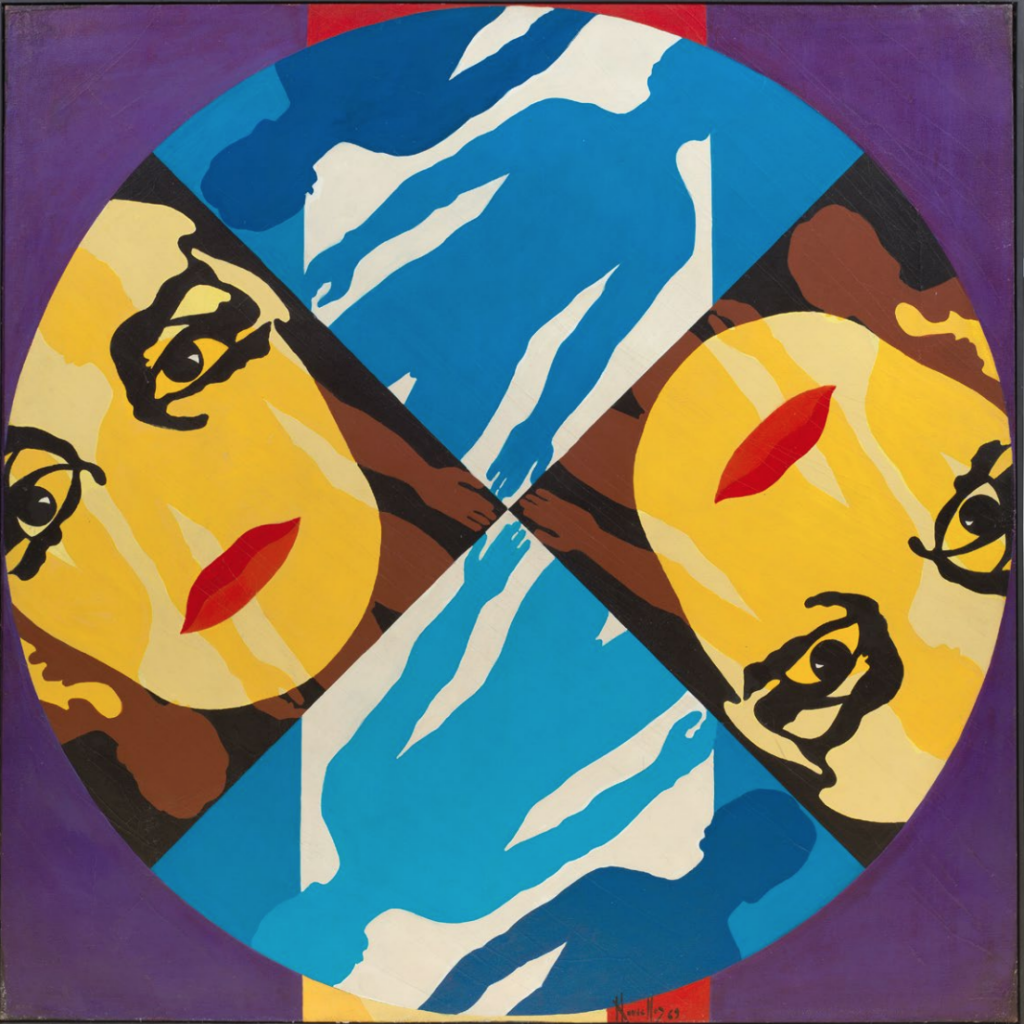

Katie White

The names most bandied about in the oft-told story of Pop Art—Andy Warhol, Roy Lichtenstein, Richard Hamilton, Claes Oldenburg—all lived and worked in two places: New York and London, the epicenters of the movement.
But there’s much more to the story. While the style first sprung up in post-war Britain, before traveling across the pond to America, it caused almost immediate artistic ripples across all of Europe and in Asia and Latin America, where artists adopted Pop art to more explicitly political ends.
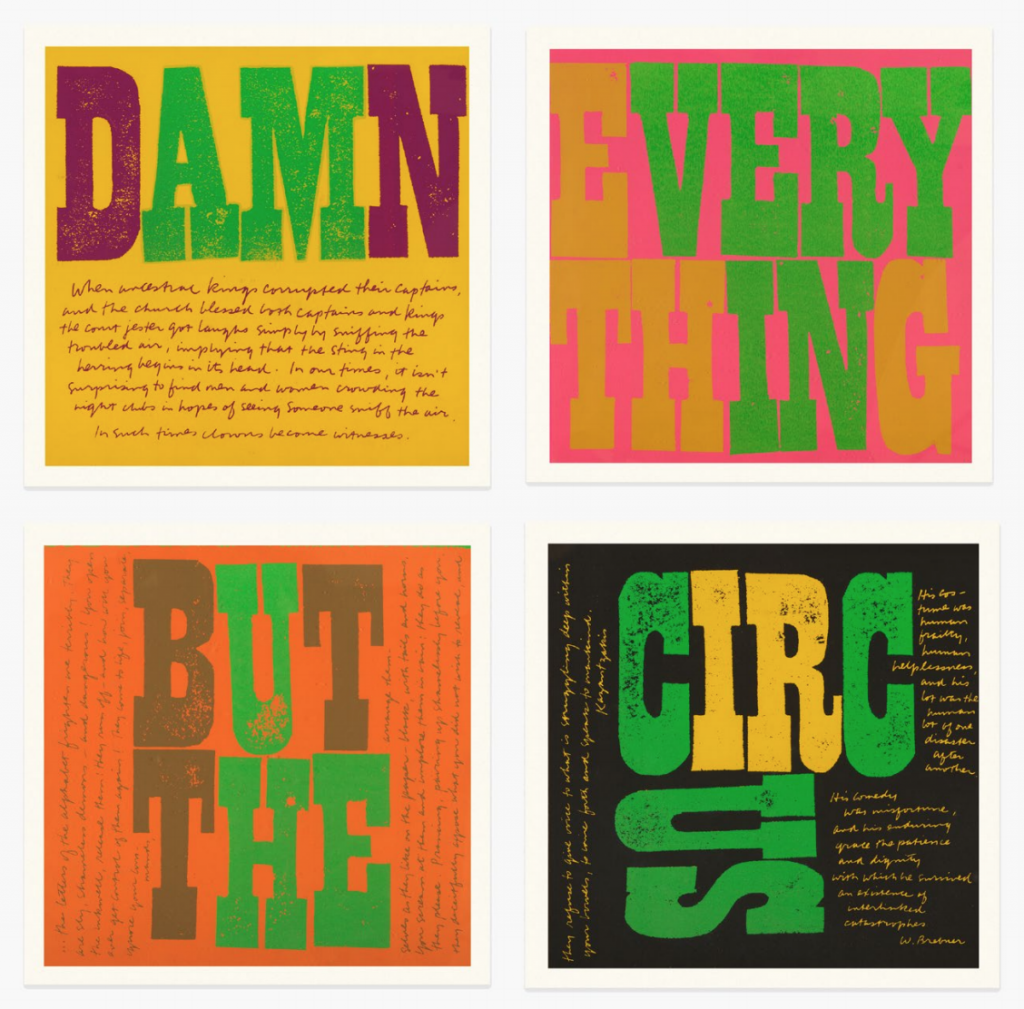
Sister Corita Kent, Damn / Everything / But The / Circus (1968–70). Courtesy of Mayor Gallery.
That story is now the subject of “International Pop,” a new exhibition at London’s Mayor Gallery. The exuberant show, which can be visited by appointment, is a confetti of brightly colorful, witty—sometimes bitingly so—works of 29 artists, which together provide a much more nuanced look at Pop art’s often glossed-over complexities.
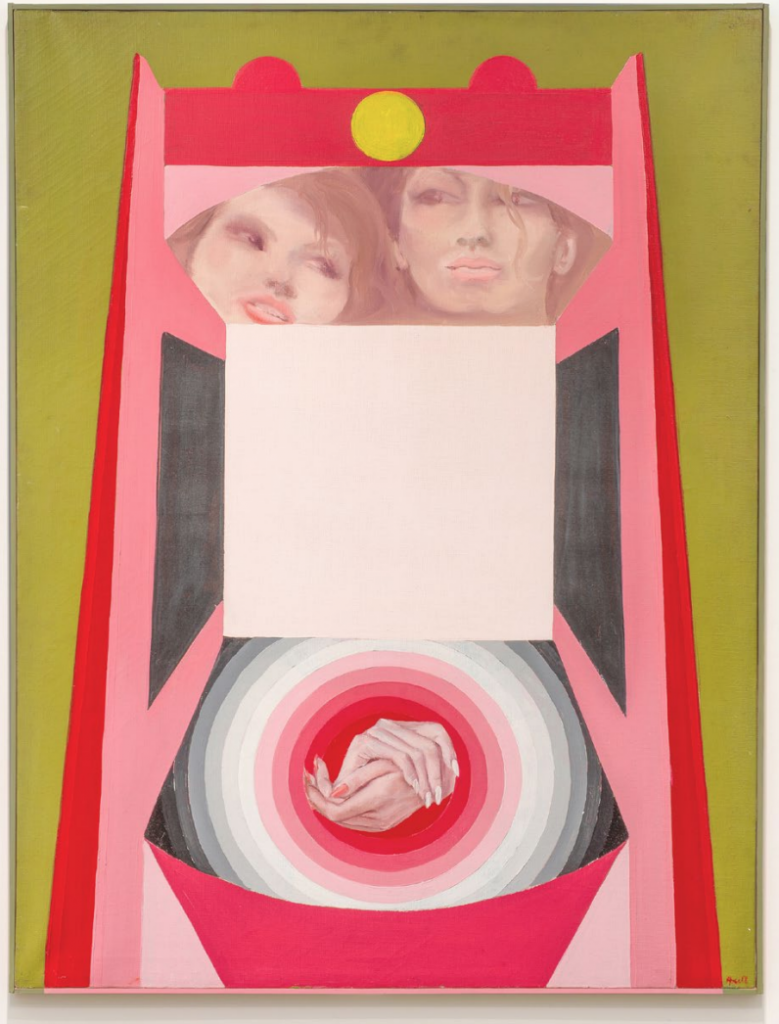
Evelyne Axell, Erotomobile III (1966). Courtesy of Mayor Gallery.
That’s not to say the show skimps on the big-gun names—works by Warhol, Hamilton, and Sister Corita Kent are all on view. But these are interspersed with works by artists who are now more obscured to history, such as Key Hiraga, whose works mix traditional Japanese techniques and erotic imagery with a brilliantly colorful palette.
Décio Noviello is another deserving of retrieval in the narrations of the northern hemisphere. A Brazilian designer of carnival costumes and floats who later became an artist, Noviello was a key player in the Brazilian neo-vanguard of the 1960s and ’70s and pioneered “expanded field painting” (before it had a name), employing heavily pigmented smoke in pyrotechnic-based happenings that sent color billowing into the air.
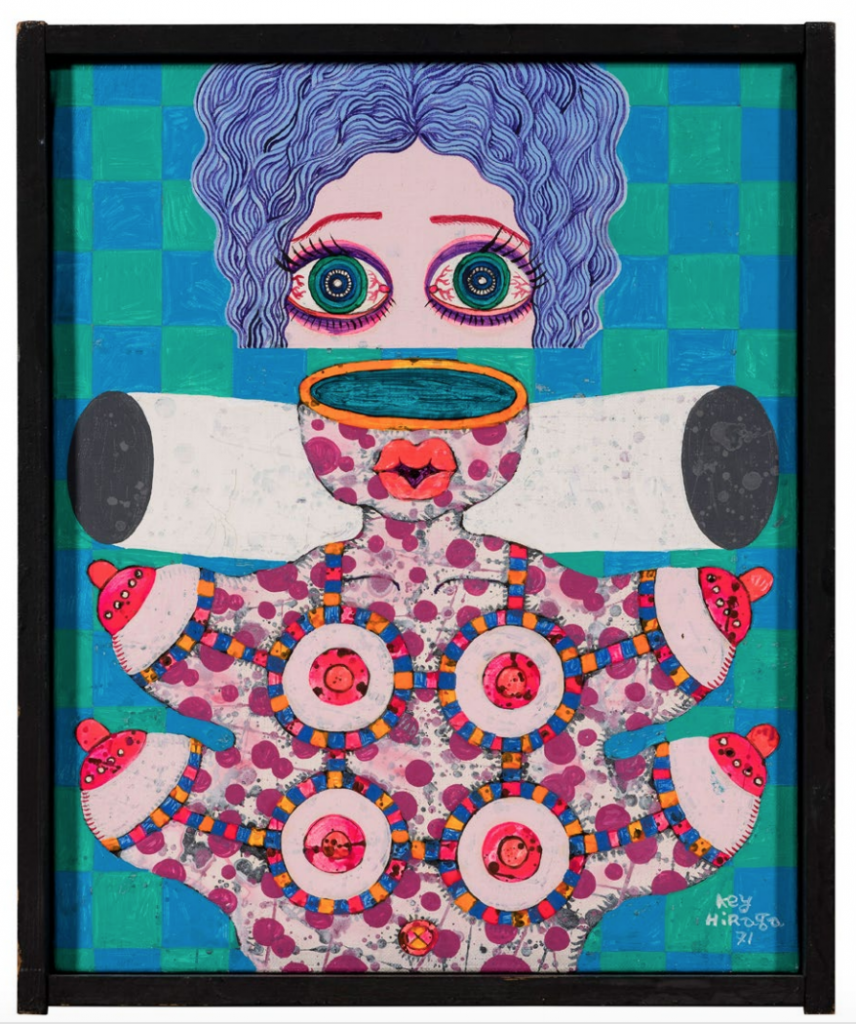
Key Hiraga, The Crazy World of Mr. K (1971). Courtesy of Mayor Gallery.
The list goes on, including Belgian artist Evelyne Axell, whose hyper-sexualized images winked at Pop’s portrayal of the female form, and Jann Haworth, who designed the album cover for The Beatles’ Sgt. Peppers Lonely Hearts Club Band, and Kentucky-born Outsider artist John Tweddle, whose occult-like imagery could readily have been painted today.
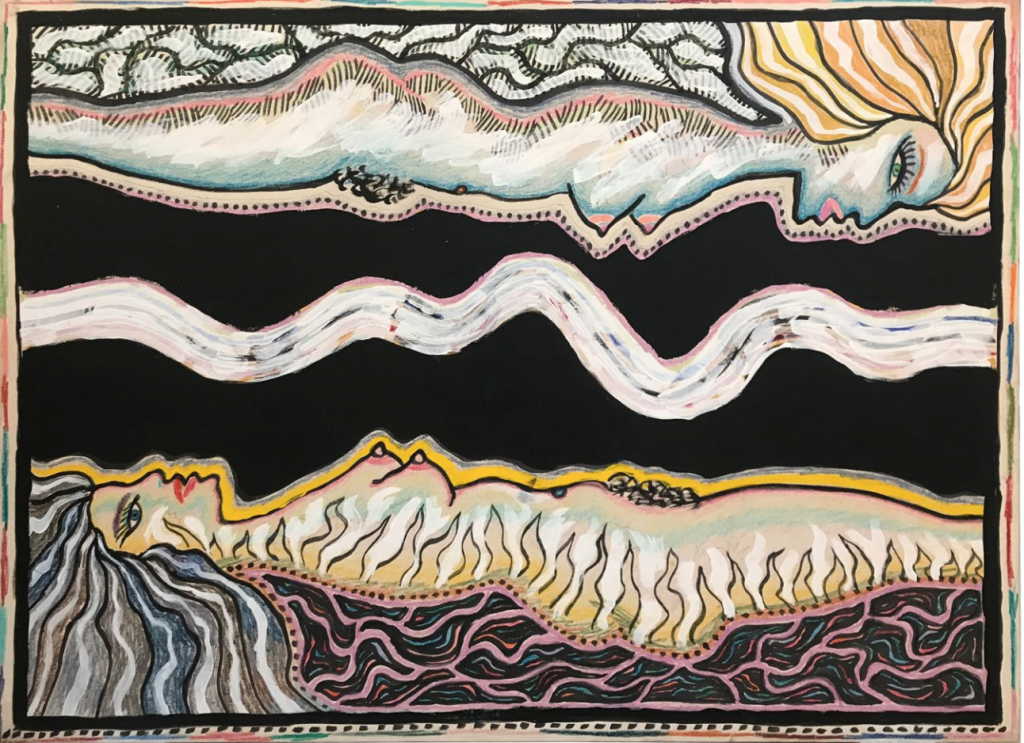
John Tweddle, Untitled (2 Women) (1967). Courtesy of Mayor Gallery.
The show keenly underscores that Pop art existed in artistic dialects with Nouveau réalisme in France, Political Pop in China, and the Independent Group in England—among numerous other iterations—and that this superficially straightforward visual language is actually one the world is still learning.
“International Pop” is available to view at Mayor Gallery by appointment through July 30, Monday through Friday, 10 a.m.—6 p.m.